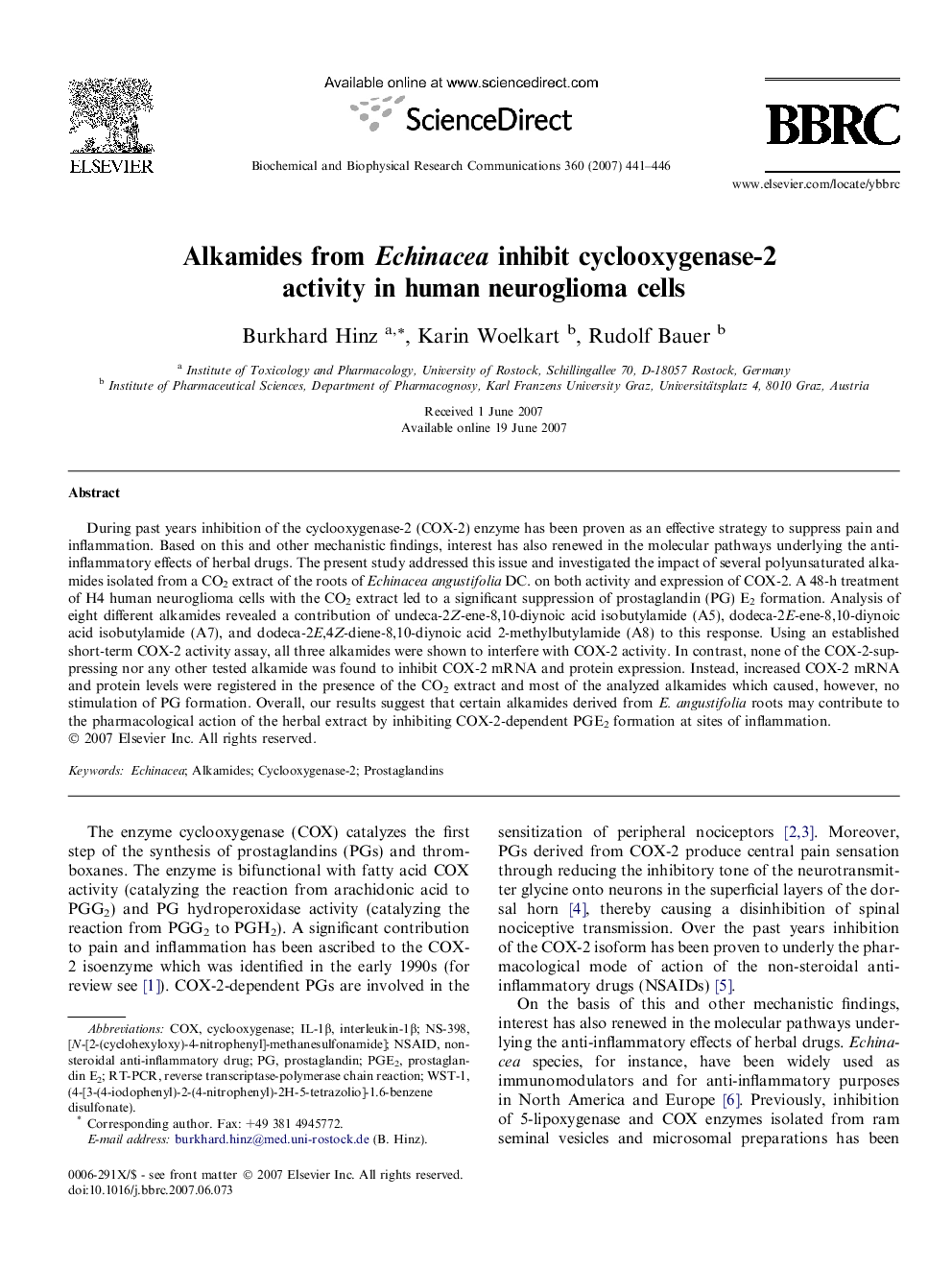| کد مقاله | کد نشریه | سال انتشار | مقاله انگلیسی | نسخه تمام متن |
|---|---|---|---|---|
| 1937305 | 1050713 | 2007 | 6 صفحه PDF | دانلود رایگان |

During past years inhibition of the cyclooxygenase-2 (COX-2) enzyme has been proven as an effective strategy to suppress pain and inflammation. Based on this and other mechanistic findings, interest has also renewed in the molecular pathways underlying the anti-inflammatory effects of herbal drugs. The present study addressed this issue and investigated the impact of several polyunsaturated alkamides isolated from a CO2 extract of the roots of Echinacea angustifolia DC. on both activity and expression of COX-2. A 48-h treatment of H4 human neuroglioma cells with the CO2 extract led to a significant suppression of prostaglandin (PG) E2 formation. Analysis of eight different alkamides revealed a contribution of undeca-2Z-ene-8,10-diynoic acid isobutylamide (A5), dodeca-2E-ene-8,10-diynoic acid isobutylamide (A7), and dodeca-2E,4Z-diene-8,10-diynoic acid 2-methylbutylamide (A8) to this response. Using an established short-term COX-2 activity assay, all three alkamides were shown to interfere with COX-2 activity. In contrast, none of the COX-2-suppressing nor any other tested alkamide was found to inhibit COX-2 mRNA and protein expression. Instead, increased COX-2 mRNA and protein levels were registered in the presence of the CO2 extract and most of the analyzed alkamides which caused, however, no stimulation of PG formation. Overall, our results suggest that certain alkamides derived from E. angustifolia roots may contribute to the pharmacological action of the herbal extract by inhibiting COX-2-dependent PGE2 formation at sites of inflammation.
Journal: Biochemical and Biophysical Research Communications - Volume 360, Issue 2, 24 August 2007, Pages 441–446